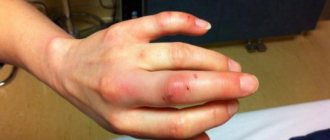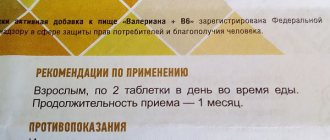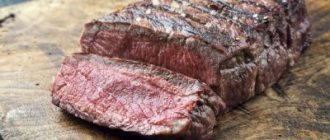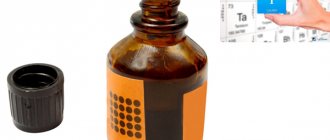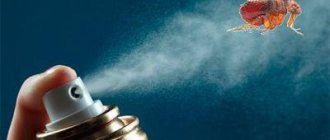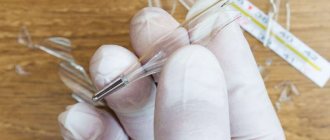Kittens are more susceptible to poisoning than adult cats. They, like all children, are very curious and often put all sorts of nasty things into their mouths. A small organism is more vulnerable, it has a smaller margin of safety, and usually for children, poisoning has more severe consequences.
If your kitten is poisoned, contact your veterinarian immediately! Call the clinic in advance and describe the symptoms in detail, and, if possible, name the toxic substance that caused the poisoning. Do not try to treat your baby yourself, because poisoning with various substances may require different help and a specific antidote.
Features of using flea drops
Antiparasitic drugs differ from each other in their composition, appearance, method of application and final result. The most popular drops are:
But they are all toxic to one degree or another. It is this feature that can cause a cat to become poisoned with a flea remedy. To prevent such situations, the manufacturer recommends applying drops only to places where the animal cannot lick them. Most often, the solution is dripped onto the cat’s withers.
Applying flea drops
However, we should not forget that cats are very flexible and resourceful creatures. And besides, the presence of other pets in the house makes it easier to lick the insecticide from the fur of a fellow pet. Even the most caring owner is not always able to ensure complete safety during and after treating a pet with an antiparasitic solution. Therefore, the question of what will happen if a cat licks flea drops may arise for every owner.
Additional necessary measures
Owners of cats infected with fleas must take into account the unpleasant fact that parasites lay eggs throughout the home. In addition to eggs, there may be larvae and cocoons in the house where a pet suffering from bloodsuckers lives.
- The insects themselves can also be outside the animal’s body, because they rarely breed directly in the fur, preferring secluded, inaccessible corners where the cat usually sleeps, eats, and rests.
- Therefore, the treatment of the entire home must necessarily go in parallel with bathing and combing.
- To prevent new flea attacks on your pet, use any convenient protective product. Fortunately, their choice on the zoological goods market is wide.
- You can choose drops, collar or spray. This will allow you to protect your meowing friend for a long time and reliably from possible future invasions of parasites dangerous to health and life.
We invite you to familiarize yourself with Mold - useful and harmful
Important! Remember that fleas can bite people too. Therefore, remove parasites from your pets in a timely manner, or better yet, use preventive protective agents, and then your home will be clean and inaccessible to bloodsuckers, and your entire family, including your cat, will be healthy and not bitten
Signs of poisoning
The consequence of a situation where a cat licks flea drops can be poisoning. However, this does not happen to every animal. The condition of the cat in this case depends not only on its immune system, but also on the amount of insecticide that has entered the body.
- Refusal of food - especially lack of appetite is noticeable if the pet does not respond to previously favorite dishes.
- Thirst - the animal’s frequent desire to drink water is explained by its efforts to remove poison from the body in this way.
- Profuse salivation. Sometimes this process is so aggravated that you can even see foam at the cat’s mouth.
- Diarrhea - loose stools may persist for several days.
- Lethargic and passive behavior, loss of activity.
- Severely dilated pupils.
- Loss of orientation may also occur (the cat spends a long time preparing to jump).
The presence of such symptoms indicates that the cat has been poisoned by flea drops.
- severe itching accompanied by allergies;
- excessive lacrimation and salivation; if your pet has such symptoms, constant access to drink is necessary;
- the formation of bald patches in places where anti-flea drops are applied.
Allergy to flea drops
It is important not to confuse them with side effects that can be observed in an animal when using cat flea drops.
More often, such reactions are observed when the dose level recommended by the manufacturer is exceeded. It is important to remember that different drugs are often used to treat a small kitten and an adult cat. If this is a general use product, then the dosage for children will be minimal. After all, poisoning a kitten with flea drops can occur in a more serious form.
Danger of droplets - theory
Effective flea treatments for cats contain insecticides. The substances belong to a low hazard class and, when used correctly, do not affect the well-being of the animal. However, the instructions below indicate that if there is an individual intolerance to the components, a number of side effects occur:
- loss of appetite, refusal to eat;
- excited state or apathy;
- drowsiness, insomnia;
- diarrhea;
- vomit;
- trembling throughout the body;
- convulsions;
- skin irritation;
- lacrimation;
- increased salivation;
- dilated pupils;
- violation of orientation in space.
It is this large list of side effects that makes you worry if your cat has taken flea drops. The whole difficulty lies in the fact that you can find out about the presence of individual intolerance in cats only after using antiparasitic drops.
What to do in case of poisoning
If a cat has ingested flea drops, then consulting a veterinarian is the first thing to do in this situation. If this is not possible, you should use the following recommendations.
- Rice water will help relieve your cat's condition when poisoned. To prepare it, take 1.5 tbsp. l. Cereals, pour 0.5 liters of water and cook over low heat for 40 minutes. After which the broth is cooled and filtered.
- You can use the drug Smecta. The cat should be given a solution prepared in the ratio: half the contents of the bag per 20 ml of water.
- Activated carbon will help remove toxins from the body. The tablets are dissolved in water and poured into the cat’s oral cavity from a syringe (1 tablet per 1 kg of weight). Enterosgel also has a similar effect.
- No-shpu or Baralgin (½ tablet) can be used as an anesthetic medication.
- Vetelact is used to restore intestinal microflora. In addition, you need to drink plenty of fluids, but it is better to limit your intake of fatty and salty foods.
- Residues of the insecticidal preparation should be washed off from the cat's fur.
Poisoning from antiparasitic drops is a very real situation that can happen to any pet. At such a moment, it is important not to get confused, but you shouldn’t treat it with disdain either. Only timely and correctly selected treatment will help alleviate and restore the pet’s condition. You should also be aware that your cat may be allergic to fleas.
Veterinary care center "Elitevet"
castration cheap, sterilization of a cat, sterilization of a dog, ultrasound of a dog, the cat's fur is peeling, the dog sheds a lot, the cat's ear stinks, the dog has diarrhea, chemotherapy for animals, the cat does not eat, fleas in the cat, animal vaccinations, dog vaccination, the cat often pees , the cat has urine with blood, the dog eats a lot, the dog drinks a lot, the dog has a big belly, the dog is limping, the paw is swollen, the dog’s stomach is sprinkled, the cat is itching, the dog is itching, severe itching, the cat is licking the belly, ringworm, fungus, put the animal to sleep , anesthesia for a cat, a dog's tooth has fallen out, eye injury, stinky breath, stinks from a dog's mouth, tartar, malocclusion in a Yorkie, grooming, trimming a dog, clogged glands, ingrown claws, oily fur, mats, unpleasant odor from a dog, broken paw, broken tail, cat walking, ear cropping, conference, veterinarian, veterinarian, treat a dog, veterinarian, veterinary dermatologist, paramedic, pet supplies, veterinary medications, medicines for animals, cat injection, cut paw, cat's swollen cheek, from ears pus is flowing, the dog is chewing its paws, calling a veterinarian, zootaxi, cefinel, catozal, ceftriaxone, the cat has a stomach ache, the cat is lying down and does not get up, the dog is not pooping, the dog is going bald, itraconazole, cyclosporine, the dog bites, rabies
www.elitvet.dp.ua
Reviews
When, after treatment, the cat licked the Bars flea drops, I was very worried that he might be poisoned. However, surprisingly, nothing terrible happened. The only thing is that the cat drank more water than usual. In the morning, I still took the animal to the veterinarian, after which I learned that the reaction to chemicals can be different.
I thought that the kitten was poisoned by flea drops when I saw how he tried to lick the fur after treatment. After which drool flowed straight from my mouth. I took him to the veterinary clinic. It turned out that this is a side effect of the medicine.
Flea drop poisoning is a fairly common disease in dogs and cats . Owners treating their pets against potentially dangerous parasites can cause great harm to their health and lead to severe intoxication of the body. In this article, we looked at the causes and symptoms of flea poisoning in cats and dogs, first aid methods and components of treatment for this pathological condition.
Poisonous insect bites
Fortunately, these types of poisonings are extremely rare in our country. In extreme cases, a cat may be stung by a wasp or a bee, but intoxication as such does not occur. The development of an allergic reaction is much more likely (which, however, is in no way safer for the cat). All this is treated with antihistamines. If you live in the southern regions of the country, where poisonous spiders/scorpions can be found, always keep the serum on hand (and this is relevant not only for treating animals). If you suspect that your pet has been bitten by someone and he does not get up, be sure to visit a veterinary clinic. We advise you not to delay this!
Reasons for the development of poisoning
Fleas are very dangerous insects for animals that can lead to a large number of diseases.
It is with the help of special drops that you can quickly and effectively get rid of them and thereby improve the quality of life of your pet and protect him from a large number of pathologies. Flea drops are applied to the animal's withers . This place was not chosen by scientists by chance. The pet cannot reach it on its own and lick off the insect repellent.
Below we have collected the main reasons why flea drop poisoning can develop in pets.
- Failure by the owner to comply with the rules specified in the instructions for the drug. You can find a large number of different flea products on sale. They all differ in application rules and action. Before using them, you must read the instructions carefully .
- Bathing the animal during the first few days after treatment. It is this reason that is leading in the development of poisoning of dogs with drops from fleas and ticks. Due to frequent walks outside, dogs are bathed much more often than cats.
- Purchasing counterfeit or expired funds. You need to buy drugs only from official and licensed outlets, veterinary pharmacies or clinics.
- Use of drops in small, weakened or sick animals.
- Applying drops not to the withers, but to another area of the body. In this case, the animal is poisoned after licking the drug. This reason is more typical for cats, since they wash and clean their fur more thoroughly.
- Incorrect selection of the required dosage of drops. The drug is available in different dosages, which depend on the weight of the animal.
- Treatment of kittens and puppies that are breastfed. At the same time, their mother suffers, as she washes them and eats the drug.
- Individual intolerance to the components of the drug and allergies to it. The animal may develop urticaria and angioedema.
Please note that kittens and puppies are more sensitive to chemicals. They develop poisoning more often than adult animals. There are often reports on veterinary forums on the Internet that a kitten has been poisoned by flea drops. The issue of treating babies should be decided by a veterinarian after examining and examining them.
Danger of droplets - practice
Cat poisoning with flea treatment can occur, but certain factors must contribute to this. Manufacturers could not help but take this situation into account and claim with full confidence that nothing bad will happen to the cat if the product gets inside.
After the cat has licked the flea drops, increased salivation and lacrimation are observed. The reaction is completely harmless and goes away on its own within a few days without special treatment. For serious signs of poisoning to occur in a cat, you need to completely lick off the entire volume of the product from the pipette.
But there is a situation when the cat is poisoned by the drops. Vomiting, diarrhea, apathy, loss of orientation in space, and other signs are observed. The situation arises when the pet’s immune system is weakened. When the body cannot resist even a small dose of an insecticide. Since all babies have a weak protective reaction, it often happens that a kitten is poisoned by flea drops.
Severe symptoms of poisoning occur with individual intolerance to the components. In this case, you need to wash the drops off the fur with soap and water and contact a specialist.
The composition of the drops must be taken into account. If a cat licks Bars flea drops, severe poisoning occurs only if there is individual intolerance. In most cases, only increased salivation and loss of appetite are observed. There is a chance that the body will not react to this incident.
Possible illnesses for a cat if it licks flea drops
Symptoms of flea poisoning
The first clinical manifestations of poisoning with flea drugs develop very quickly, within the first 5-10 minutes. The severity of symptoms depends on the quantity and quality of the medicine with which the animal was treated.
If your pet's condition begins to deteriorate shortly after being treated for parasites, you should first think about possible poisoning from flea drops and take all measures to help the animal.
The following are symptoms and signs that may indicate poisoning:
- Increased salivation. For some breeds of dogs, this symptom is not indicative, since they constantly secrete saliva in large quantities. But if a cat has been poisoned by flea drops, this symptom can immediately suspect the development of the disease.
- Impaired coordination of movements. The animal begins to fall on its side when walking , crash into furniture and not fit into doorways.
- Smacking and licking are signs of nausea.
- Excessive vomiting can be provoked by damage to the central nervous system by toxins.
- Hyperemia (redness) of the mucous membranes and ears develops as a result of an allergic reaction.
- The appearance of itching and rashes on the skin. The animal begins to scratch its skin.
- Convulsions throughout the body, reminiscent of an epileptic seizure. During a seizure, the animal loses consciousness, throws its head back, and stretches its paws forward. Convulsions may be accompanied by spontaneous passage of feces and urine.
- Loss of consciousness develops in case of acute poisoning. The animal may fall into a deep coma.
What to do if your cat is poisoned
If a cat has ingested flea drops, it is necessary to begin treatment immediately, without waiting for the pet’s health to worsen. Ideally, show the animal to a veterinarian who can assess its condition and prescribe adequate treatment.
In case of poisoning, the owner has 2 tasks: to relieve general intoxication and provide symptomatic treatment.
If a cat has licked off flea drops, first of all he needs to be given adsorbents that will draw out all the toxic substances.
To relieve intoxication you can use:
To stop diarrhea you can:
If the cat has licked the flea drops, the drug diluted in water can be administered using a syringe.
You should firmly fix the animal, throw back its head, press between the upper and lower jaws, encouraging it to open its mouth, and then pour the medicine between the cheek and teeth in small portions.
Another way to give the tablet is to crush it, mix it with cottage cheese and apply it to the front paws. The animal will quickly lick the medicine off them.
If the victim spits out all the drugs, an injection can be made into the thigh.
If a cat is poisoned by flea drops, it is necessary to cleanse its body of toxins.
This is done according to the following scheme:
- Wash your pet's fur thoroughly to prevent re-poisoning.
- On the first day, the seals are deprived of food. In the acute period after poisoning with a flea remedy, it is not advisable to load the digestive tract.
- Rinse the stomach. Before administering the medicine, you should give your pet water to drink, and then, by pressing on the root of the tongue, induce vomiting.
- Cleanse the intestines. To neutralize the effect of the flea remedy, you can give the animal an enema - inject 50 ml of water with a small bulb.
- After poisoning with flea drops, your pet should drink more. If the animal is too weak, water can be given forcibly, 5 ml every half hour to hour.
For several days after poisoning with flea drops, you should follow a diet: exclude fatty, spicy foods, and dry food. You should give more fermented milk products, water, and cereals.
Poisoning a kitten with flea drops is more severe than poisoning an adult.
The amount of poison that gets inside will be the same, but the body weight of animals can differ significantly. It is best to consult a veterinarian about the problem.
The specialist will probably know what to do if the kitten is poisoned and will be able to prescribe competent treatment.
When treating a baby, it is worth taking a number of additional measures:
Do not forget that the weight of a baby is several times less than the weight of an adult animal. Accordingly, the dosage of the drug during treatment must be reduced.
Poisoning of a dog or cat after treatment with drops. What to do?
What to do in case of poisoning
Treatment of poisoning with flea drops is carried out by a veterinarian. When the first signs of disease appear, you should take your pet to a veterinary hospital. If for some reason you cannot do this right away, for example, if symptoms develop at night and there is no 24-hour hospital nearby, begin to provide first aid yourself. Below we looked at its main components:
- Give your pet the sorbent to drink . Regular activated carbon will do. Calculating the dosage is very simple: for 10 kg of animal weight you need to take 1 tablet of coal. So for a cat weighing 5 kg you will need half a tablet. The medicine must be dissolved in 5-10 ml of plain water and administered into the animal’s mouth through a syringe (without a needle).
- Give your pet plain water. This is best done with a syringe. Pour 5-10 ml of liquid into the animal's mouth every 10 minutes. Drinking will help reduce the severity of intoxication syndrome.
There is nothing more you can do to help the animal. There is no need for an enema or gastric lavage , since most of the drug is absorbed into the body through the skin. Further treatment will be carried out in a veterinary clinic.
How to treat a kitten after poisoning
After completing first aid measures at home, you can carry out therapeutic measures.
- Three hours after giving enveloping substances and adsorbents, give a laxative: one teaspoon of vegetable oil, saline laxatives (sodium or magnesium sulfate 2% solution 1–5 ml).
- An enema cleanses the intestines well: inject 5–10 ml of saline solution into the kitten’s rectum from a syringe.
- To enhance kidney function, give a diuretic, preferably of plant origin: decoctions of bearberry, lingonberry, juniper berries, a diuretic mixture.
- If dehydration occurs, give saline or Ringer's solution.
- To maintain the body, a glucose solution is given.
- For liver function. When a kitten is poisoned, how to treat the liver so as not to harm it? You can give Karsil 1/4 tablet, Hepatovet 0.5 ml for a month - this will support the body well.
Remember, in case of poisoning, it is important to provide first aid as quickly as possible. The success of further treatment will depend on this. Stop the absorption of the poison, and then seek qualified veterinary care.
Veterinarians recommend that if an adult cat or kitten is poisoned by flea drops, immediately take him to the clinic, as death is possible. Most often, intoxication occurs due to the negligence of the owner, the wrong place of application, or an overdose of the medication. To stop the symptoms of poisoning, the cat needs to undergo treatment with steroids and drips with saline solutions. At home, you can only reduce the negative effects of chemicals.
Treatment components
Treatment is prescribed by a veterinarian after examining the pet. Show the doctor the drug you treated him with. You also need to tell about your animal’s concomitant diseases, whether he is allergic to medications or food components.
After examining the pet, the doctor will begin providing first aid. It may consist of:
- intravenous or intramuscular administration of steroids. The most commonly used drug is dexamethasone . This drug quickly eliminates allergic manifestations and improves the pet’s condition;
- droppers with solutions to reduce intoxication and accelerate the removal of toxins from the body through the kidneys;
- administration of antihistamines (antiallergic) drugs, this can be diphenhydramine, suprastin, loratadine.
After providing first aid, the doctor will prescribe a course of treatment. You can give some medications to your animal yourself. For injections and IVs, you will need to bring your animal to the veterinary clinic.
Visit doctor
After carrying out all the necessary manipulations, you should take the kitten to the nearest clinic. To simplify diagnosis and prescribe therapy, it is recommended:
At the first symptoms of poisoning in a kitten, you should show it to a veterinarianif possible, take with you a sample of the suspected poisonous product (a small portion of food or liquid, medication packaging, a sprig of a poisonous plant);
- collect the remaining vomit in a bag or sealed container;
- calculate the approximate amount of poison swallowed;
- remember and describe the stages and rate of development of symptoms, all manifestations of pathology, the presence of concomitant diseases or allergies to medications in the kitten;
- If you suspect intoxication with waste products of helminths, collect a small amount of feces.
The veterinarian will conduct a visual examination of the pet,, if necessary, prescribe laboratory and instrumental examinations and prescribe treatment. In severe cases, detoxification therapy may be required in the form of IVs or injections, as well as surgery.
How to protect an animal from poisoning
Paying close attention to your pet's health will help you protect it from drug poisoning. Below we have compiled recommendations to help you do this:
- Do not change flea medications . If you have already treated your pet with some kind of drug, and he tolerated it well, continue to use it in the future.
- Check the expiration date of the medicine before applying it to your pet's skin.
- Read the instructions on the flea product carefully before using it.
- Apply the drug strictly to the place indicated in the instructions for use.
- Buy flea products only from official sales points (veterinary pharmacies or clinics).
- Do not bathe the animal for the first 2-4 days after it has been treated for parasites..
How to help your pet
Having noticed alarming symptoms, you need to try to alleviate the condition of a cat poisoned by flea drops as much as possible. Ideally, take the animal to the veterinarian and place it in the hands of a professional. However, this is not always possible, and it’s a shame to look at a cat. What to do in this case?
You can give the animal rice water. It is prepared by pouring one and a half tablespoons of cereal with half a liter of water and boiling over low heat for about forty minutes. The cooled and strained liquid is offered to the cat. Since he is constantly thirsty, most likely he will not refuse the medicine. Otherwise, the broth is poured inside the cat using a syringe.
Among medications for poisoning with flea drops, Smecta is used. Half a sachet of this drug is diluted with two tablespoons of water and poured into the mouth or offered to the animal as a drink. The danger to a cat can be significantly reduced by allowing the animal to lick half a tablet of regular activated carbon, crushed and dissolved in water.
It will draw out all toxins from the body. No-Shpa will help relieve the condition caused by the drops. The dose of this drug for an adult cat is also 0.5 tablets. But the intestinal microflora is perfectly restored by the prebiotic for animals “Vetelakt”. The specifics of its use are described in the attached instructions.
A cat that has been poisoned by flea drops should drink more. You can add a little potassium permanganate to the water if the incident occurred recently. Fatty, salty, sweet foods are contraindicated for the animal during this period. Most likely, the cat himself will refuse such food, because his appetite is practically zero.
The Right Action
If a cat is poisoned by flea drops, it is treated in almost the same way as a human. The best decision is to seek help from a veterinarian. If this is not possible, proceed to independent therapy.
- Rice water helps against poisoning. Normalizes the functioning of the digestive tract, eliminates diarrhea. Add 2 tbsp to 500 ml of water. spoons of rice, cook for 40 minutes. The broth should be cooled and given to a cat or kitten.
- Poisoning of a kitten with flea drops is treated with Smecta. Dilute half the sachet in 20 ml of water and give it to your pet from a pipette or syringe.
- Enterosgel paste and an activated carbon tablet are used as an adsorbent to remove toxins from the body. The medicine is pre-dissolved in water.
- If the poisoning is severe, you should give an enema with a weak solution of potassium permanganate.
- For pain relief, you can give 0.5 tablets of analgin, baralgin, no-shpa.
You need to keep your cat or kitten on a diet for several days. Porridge, dairy products, mashed potatoes. Drink more, nothing fatty or fried, do not give dry cat food. Drugs should be used to normalize intestinal microflora. If you cannot help your pet on your own, you should immediately go to the veterinarian.
To avoid such situations, you must strictly follow the instructions for using the drops. If several animals need to be treated, they should be kept in different places for 2 hours after the procedure so that they do not have the opportunity to lick drops from each other.
It is difficult to find a person whose pet has never become infected with fleas. Even in modern times, ectoparasites pose a serious problem for every cat or dog owner. Fortunately, a lot of veterinary products are produced to combat blood-sucking insects. Insecticidal drops are very popular today; applying them to the withers of an animal causes the death of pests. However, this efficiency indicator indicates the high toxicity of the drug. Many owners of mustachioed pets are puzzled by the question of what to do if a cat is poisoned by flea drops.
Prognosis and prevention
All owners, without exception, are interested in how dangerous poisoning with flea drops is. Veterinarians reassure: the cat will not die if it has not swallowed a whole bottle of the product. Most likely, she was “lucky” to lick off quite a bit of the drug.
However, in this state the animal cannot be left without attention. Drop poisoning is a serious stress for the body that can provoke other dysfunctions. Old or sick individuals, as well as kittens, suffer the most from intoxication.
To avoid poisoning, you should drip the product exclusively onto the withers. This is the place where it is most difficult for an animal's tongue to reach. However, sometimes the cat licks drops from this place too - after all, the animal’s body is very flexible and dexterous. Therefore, it is not enough to simply apply the product to the withers in the required amount. Additional measures need to be taken. Let's say, put a special collar on the cat's neck, which will prevent the fluffy from licking himself.
It is not uncommon for several animals to live in one house. By treating one pet with fleas, it is easy to jeopardize the health of another. Animals tend to lick each other. When fighting fleas, you should keep your tailed pets separately.
Well, one last thing: you need to choose high-quality drops. And buy them in specialized pharmacies or stores. Poisoning with a low-grade flea remedy of dubious origin can have unpredictable consequences.
How can a cat get poisoned on the street?
First of all, these are plants. Cats love to nibble on grass and mostly choose healthy options that saturate their bodies with the necessary substances, vitamins and microelements. But cats also make mistakes, so it is possible that the animal will simply eat grass that is poisonous to it.
This type of poisoning is always accompanied by increased heartbeat with signs of arrhythmia. The pulse becomes rapid, the pupils become very constricted or dilated, diarrhea and trembling in the limbs occur. This requires urgent rinsing. Enterosgel helps well for this, but a regular solution of potassium permanganate will do.
A cat can be poisoned by poisonous grass
If a cat eats something stale outside, it can negatively affect its health. In the case where the food was very bad, the mucous membranes begin to turn pale, and loss of consciousness is possible.
This can be done by injecting a saline solution or a small amount of hydrogen peroxide.
General rules of use
Typically, drops against fleas and ticks are applied to the animal's skin at the withers. To do this, you need to carefully move the fur apart and apply the dose of the drug indicated in the instructions. For better effect, the product can be rubbed into the skin. After this procedure, the kitten cannot be combed or washed for 2-3 days.
Sometimes manufacturers recommend applying droplets not only to the withers, but also along the spine. This is done in exactly the same way as in the first case. Each drug has its own dosage, so be sure to read the instructions before applying the product. It also describes in detail the number of flea drops.
Sometimes your veterinarian may recommend using a spray instead of drops. In this case, the drug must be applied differently. For example, Fipronil spray must be sprayed onto the entire skin of the animal.
Careful use
Treating your pet with anti-flea drops
Manufacturers use insecticides of a certain dosage to make their products. A minimal amount is enough to eliminate fleas from a cat, but the dose remains safe for animals.
The fact that it is recommended to drip in places inaccessible for licking is alarming: the area of the withers between the shoulder blades, along the spine. However, these recommendations relate more to the effectiveness of the product than to the safety of cats.
All modern drops for cats work the same way. Within 2 hours they are absorbed by the skin, localized in the hair follicles and sebaceous ducts. If the drops are licked off and do not have time to be absorbed, protection against fleas cannot be called complete.
Allergy to toxins
If you apply flea drops correctly to the withers, the cat should not lick them off. The situation is much more complicated if the kitten is also treated with a toxic agent. Then the cat can become poisoned by licking its cubs. If there is only one kitten, then there is no need to worry too much, but if there are several kittens, you need to think through safety measures in advance.
It is better to protect the animals from each other for a couple of days. If the drug is licked by a small pet, the poison can act on it several times more powerfully. In addition, it is important to note that small kittens can grab each other by the neck while playing and thus ingest toxins.
Allergic reactions to flea drops for cats are extremely rare. But if your pet shows obvious allergy symptoms after applying the drug, and they do not go away within 1-2 days, you should urgently seek help from a veterinarian.
If you correctly apply drops to the withers against fleas, the cat should not lick them off
Dangerous symptoms include:
- itching at the site of application of the drug;
- hair loss;
- dermatitis.
A person also needs to be extremely careful when applying the drug. It is better to use gloves, and after the procedure, wash your hands thoroughly with soap. It is also recommended not to handle the animal for several days. Toxins can remain on the pet's skin, so upon contact with it, the poison can cause allergies in the owner.
But drops for cats have little toxicity for the animals themselves; such drugs act much more aggressively on fleas. Some parasites die immediately after applying the drug. This often happens when an insect gets into the area of the skin where the drops were applied. Other parasites try to escape from their host as soon as they smell an unbearable smell.
>Flea drops for cats can be dangerous (video)
Making your own detergent
Fleas are a nuisance that needs to be dealt with at the first sign. They not only annoy your pet, but also carry dangerous diseases. These are plague, worms, encephalitis, fungal infections, anthrax. An effective budget remedy can be made at home. Store-bought products are good, but sometimes they pose some danger in some cases.
Medicinal plants are known to repel parasites. Their effect extends not only to animals, but to people, interior items, and bedding. Near the place where your pet sleeps, you can hang a small bush of dried wormwood or mint. When fresh, it can be used for homemade detergent. It is enough to prepare a decoction, cool it, add tansy (optional) and some grated laundry soap.
Fleas, ticks, and other harmful insects react to strong odors. Here you can use cheap essential oils from any pharmacy. It is recommended to dilute 3-4 drops with warm water, add grated soap without additives (preferably made according to GOST). The procedure can be done 1-2 times a week.
Effective drugs
There are a number of drugs, the results of clinical studies of which indicate their effectiveness and relative safety. The most popular flea treatments include:
Beafar is a disinfectant that can be applied to both cats and small kittens. In addition, this remedy is also indicated for pets who are weakened after illness. Biafar is considered the safest drops, since their components are absolutely harmless to animals. Therefore, you should not worry if your cat licks your kitten after applying the product. The effect of this drug can last for 2 weeks.
The classic drug of the Bars brand - drops and the new drug Bars Forte contain a toxic substance of the phenylpyrazoles group - fipronil
Domestic drops Bars begin to act immediately after applying them to the pet’s skin. But they cannot be used to disinfect pregnant or lactating cats. It is also not recommended to use the drug for cats that are under 10 weeks old. For such animals, the manufacturer produces a milder product.
Barrier-super can be given to kittens that have reached 12 weeks of age. The effect of the drug lasts for 2 months, so it guarantees high efficiency. Thanks to long-term exposure, toxins destroy cat fleas at all stages of development. A convenient dispenser allows you to carefully apply the drug to the withers. There is no need to place drops along the spine.
Hartz flea and tick drops are not cheap, but one package contains 3 pipettes, each of which has an effect for 1 month. It is important to note that this drug is not afraid of moisture. Toxins remain on the animal's skin, even if the pet is exposed to rain. The manufacturer produces the drug in different dosages, which depend on the age of the cat. However, this remedy should not be used on sick or debilitated cats, or on kittens under 12 weeks of age. This flea preparation does not need to be washed off.
Fipronil is a flea spray. It should be applied to the skin only in fresh air or in a well-ventilated area. The drug must be sprayed at a distance of 10 cm from the skin, gently lifting the hair. Fipronil should moisten the skin; for a better effect, you can rub it a little. Processing must be carried out only with gloves. The manufacturer also recommends moistening a napkin with the preparation and treating the animal’s ears, skin folds and paws with it. During the first 10 minutes after disinfection, contact with the animal is prohibited. It is also not recommended to bathe him for the next 3 days.
To choose the most optimal remedy, it is advisable to consult a veterinarian. If for some reason this is not possible, when purchasing the drug, it is imperative to inform the seller of the age and weight of the animal, and the degree of parasite damage. This will help you get rid of fleas quickly and effectively.
Useful materials:
What are chloramphenicol eye drops prescribed for? Share Levomycetin eye drops are an ophthalmic drug intended...
General description of the disease Cutaneous horn on the forehead or face (ICD 10 code - L57.0) -...
Main reasonsBefore considering the factors that provoke the appearance of discharge with a sourish odor, it is necessary to immediately note...
Normal temperature in different types of animals Veterinary services Day hospital for animals Veterinary certificates Vaccination…
